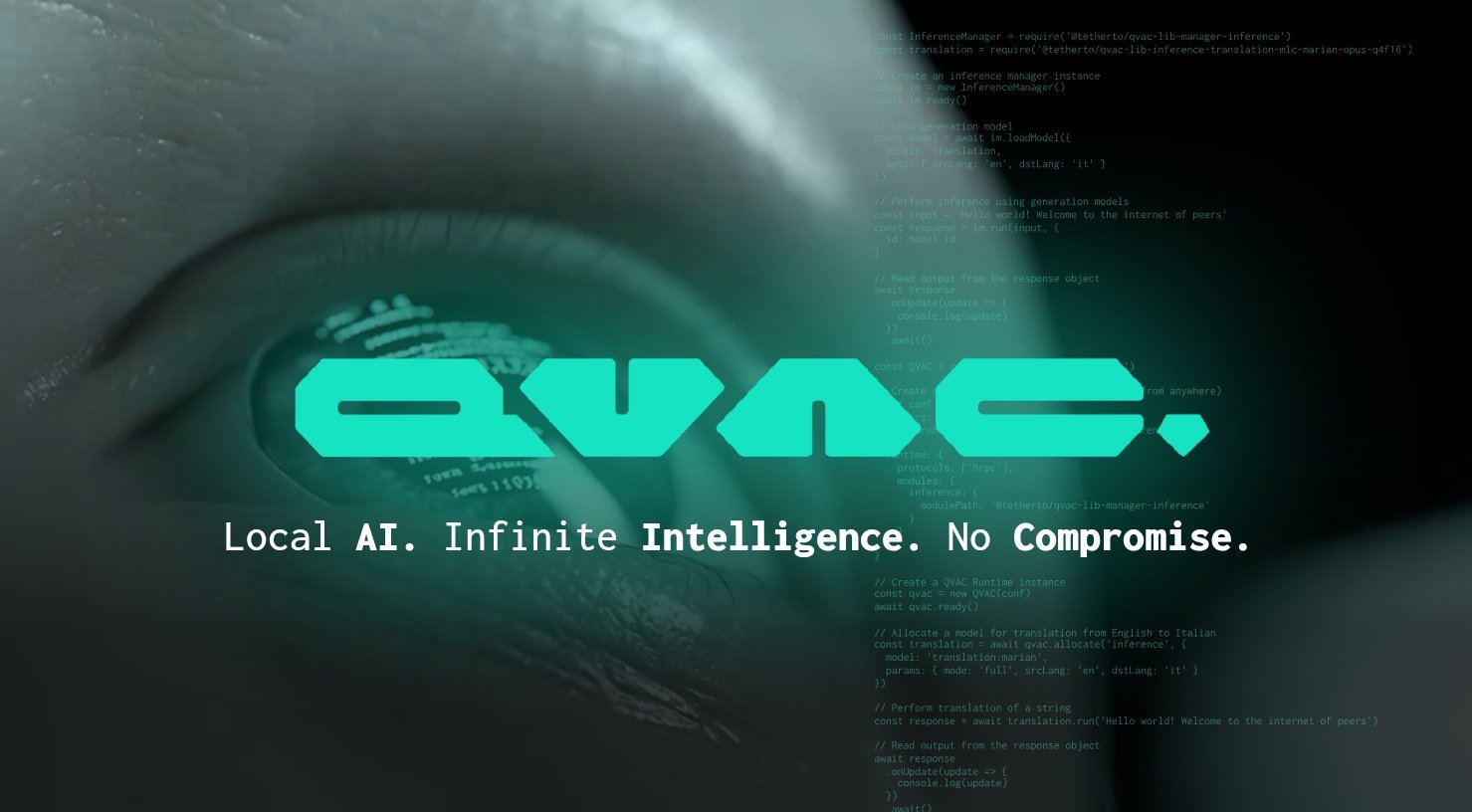Tether Debuts QVAC, a groundbreaking decentralized AI platform, marking a strategic leap into the intersection of blockchain and artificial intelligence. Announced on May 5, 2025, QVAC operates locally on user devices, eliminating reliance on centralized servers and integrating USDT and Bitcoin payments. This article explores QVAC’s features, Tether’s vision, and its potential to reshape the AI-blockchain landscape.
A New Era for AI and Blockchain
Tether Debuts QVAC, a platform designed to redefine AI development with a focus on privacy, autonomy, and decentralization. Unlike traditional AI systems dependent on cloud infrastructure, QVAC runs independently on users’ devices, using a modular, open-source architecture. This peer-to-peer (P2P) network enables billions of AI agents to interact directly, fostering secure data sharing and transactions without intermediaries. Tether’s CEO, Paolo Ardoino, envisions QVAC as a foundation for sci-fi-inspired AI, seamlessly woven into global systems.
The platform integrates Tether’s Wallet Development Kit (WDK), enabling non-custodial transactions with USDT and Bitcoin. This allows developers to build decentralized applications (dApps) that support payments across devices and ecosystems. QVAC also incorporates Keet, Tether’s P2P messaging app, enhancing secure, distributed data interactions. With USDT’s market cap nearing $150 billion, Tether leverages its stablecoin dominance to drive this innovative AI-blockchain venture.
Strategic Investments and Vision
Tether Debuts QVAC as part of a broader strategy to lead the AI-blockchain market, projected to exceed $25 billion by CoinGecko’s 2024 estimates. Tether’s prior investments in AI infrastructure, including $420 million in Germany’s Northern Data in September 2023 and a $610 million loan two months later, laid the groundwork for QVAC. These moves signal Tether’s commitment to building robust, decentralized AI ecosystems.
QVAC’s architecture avoids API keys and centralized failure points, aligning with crypto’s ethos of autonomy. Its modular design supports flexible dApp development, empowering developers to create privacy-focused applications. Online discussions highlight enthusiasm for QVAC’s potential to disrupt centralized AI models, though some note the challenge of scaling P2P networks across diverse hardware.
Discover: Tether explores U.S.-based stablecoin to adapt to regulations
Features and Capabilities
Tether Debuts QVAC with features that set it apart in the AI-blockchain space. The platform’s runtime operates locally, reducing latency and enhancing privacy by keeping data on user devices. Its P2P network enables AI agents to self-adapt and scale, supporting applications from financial tools to secure communication. Integration with Keet ensures encrypted, decentralized data exchanges, critical for privacy-sensitive use cases.
The WDK facilitates seamless USDT and Bitcoin transactions, making QVAC a versatile platform for developers and users. By eliminating cloud dependency, QVAC minimizes risks of data breaches and censorship, appealing to the crypto community’s emphasis on sovereignty. This positions QVAC as a competitor to platforms like SingularityNET, which also blends AI and blockchain but relies on different frameworks.
Implications for the Future

Tether Debuts QVAC, potentially transforming how AI and blockchain converge. By prioritizing decentralization, Tether challenges tech giants’ dominance in AI, offering an alternative that empowers users. The platform’s open-source nature invites global developer collaboration, accelerating innovation in AI-blockchain applications. Community sentiment on X reflects optimism, with users praising QVAC’s privacy focus but urging robust execution to meet its ambitious goals.
QVAC could drive adoption of USDT and Bitcoin in AI-driven economies, expanding Tether’s influence beyond stablecoins. However, scaling a decentralized AI network across varied devices poses technical hurdles. Tether’s $1 billion+ investment in AI infrastructure suggests confidence in overcoming these challenges, positioning QVAC as a leader in the growing AI-blockchain market.
Conclusion
Tether Debuts QVAC, a decentralized AI platform running on local devices with USDT and Bitcoin integration. By leveraging its AI-blockchain expertise and investments like Northern Data, Tether aims to redefine AI development. With features like P2P AI agents and Keet’s secure messaging, QVAC promises privacy and autonomy. As the AI-blockchain market grows, QVAC could cement Tether’s role as an innovator, shaping the future of decentralized technology.




